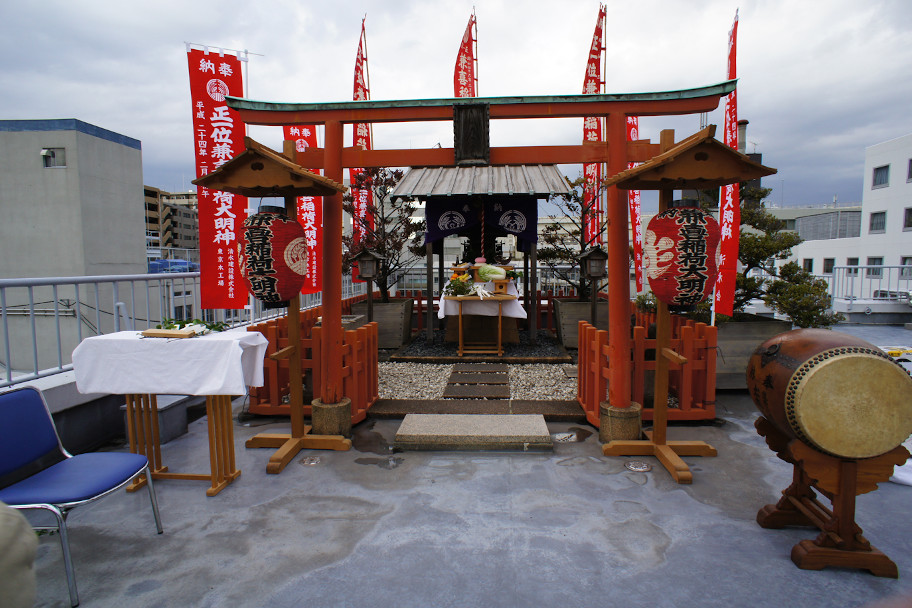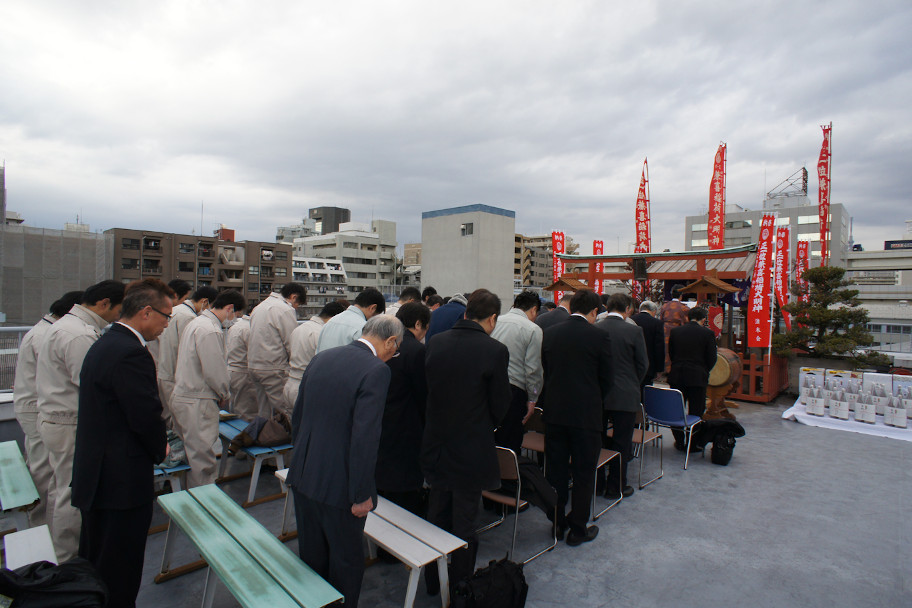
March 5, 2012
Perpetually Passing on a Traditional Ceremony to Pray for Better Safety and Quality
On January 4 each year, a ceremony to welcome the new year is held at Shimizu’s Tokyo Mokkoujou Arts & Crafts Furnishings. The traditional Kenjaku ceremony of Tokyo Mokkoujou Arts & Crafts Furnishings is performed together with the Seibokukai, a club consisting of Shimizu’s business partners.

A measuring stick*1 is created and dedicated during the Kenjaku Ceremony, which is also called the ceremony of measurements, at the beginning of each year. This dedication is a prayer for better safety and quality that year. The unprocessed timber was harvested from the river behind Tokyo Mokkoujou Arts & Crafts Furnishings more than 40 years ago, the sawmill was started up, and a measuring stick was produced.
This ceremony was gradually simplified over many years. A measuring stick produced from lumber at Tokyo Mokkoujou Arts & Crafts Furnishings in advance has been used for the ceremony since 1969, and the ceremony now closely resembles a Shinto ritual. In the Kenjaku ceremony today, the finishing plane and sumi ink marking*2 are performed on the measuring stick (made of Japanese cypress). Red and white cords are then tied to it, a ceremonial folding fan is attached to pray for becoming prosperous, and the measuring stick is dedicated.
At Tokyo Mokkoujou Arts & Crafts Furnishings the transmission of the spirit of woodworking to future generations through this ceremony is regarded as one of the facility’s important missions, along with handing down woodworking skills.
*1 The measuring stick is a tool for measuring and verifying such aspects as the length of materials and the depth of bore holes
*2 The sumi ink marking refers to the lines drawn and symbols marked on lumber using an sumi ink pot and brush.

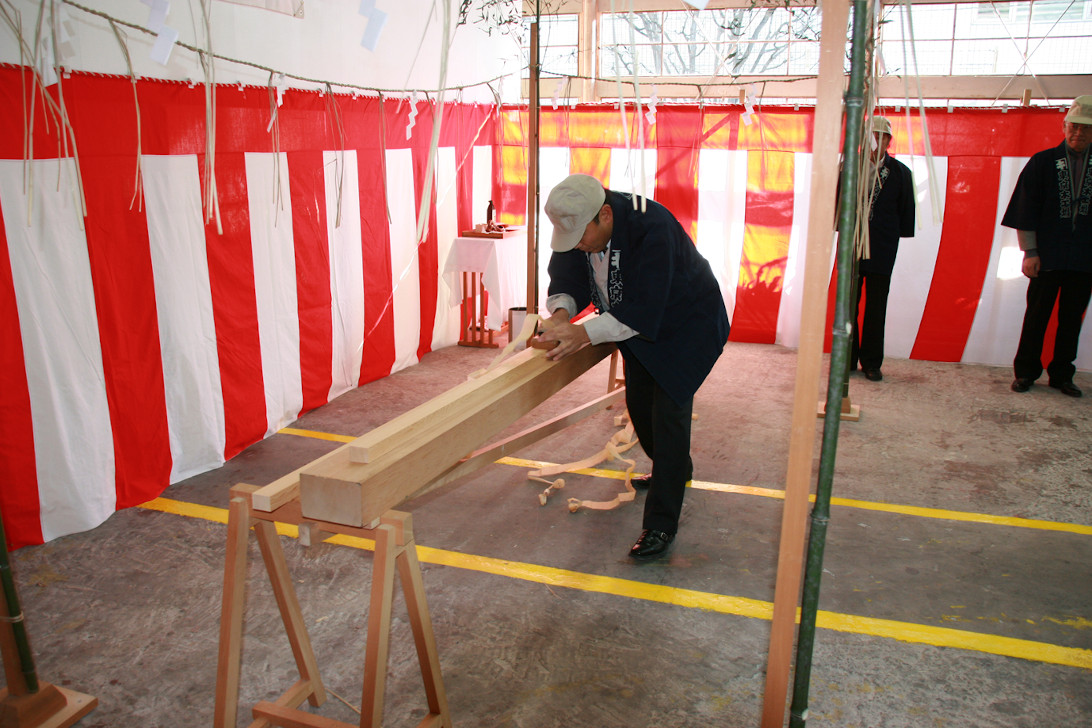
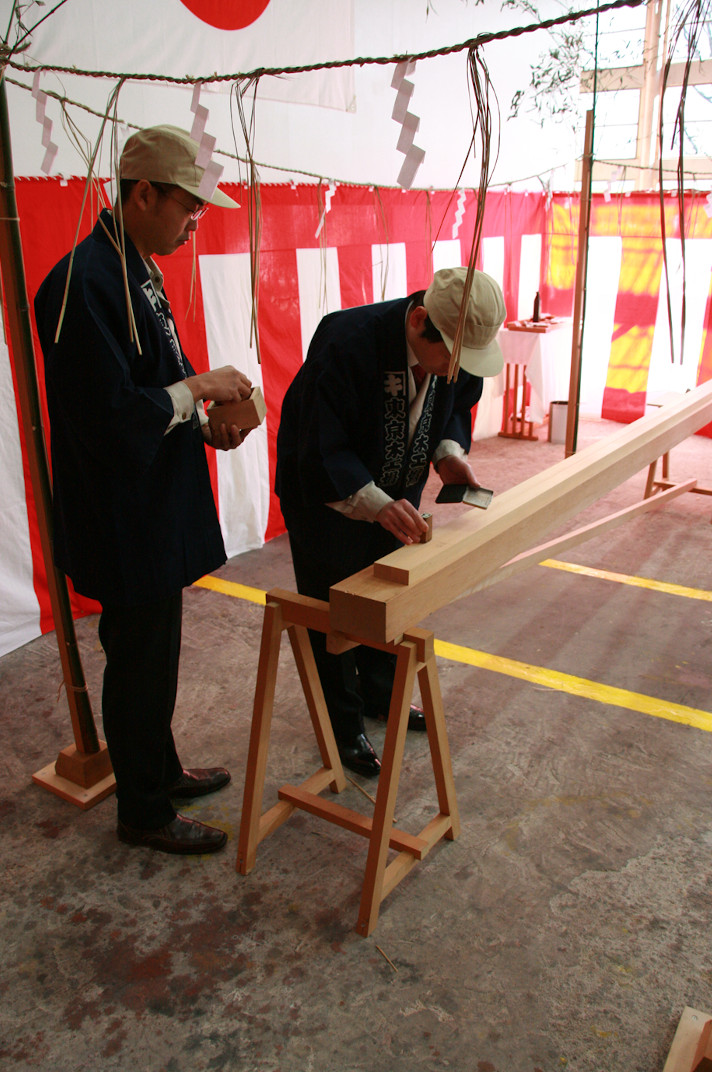
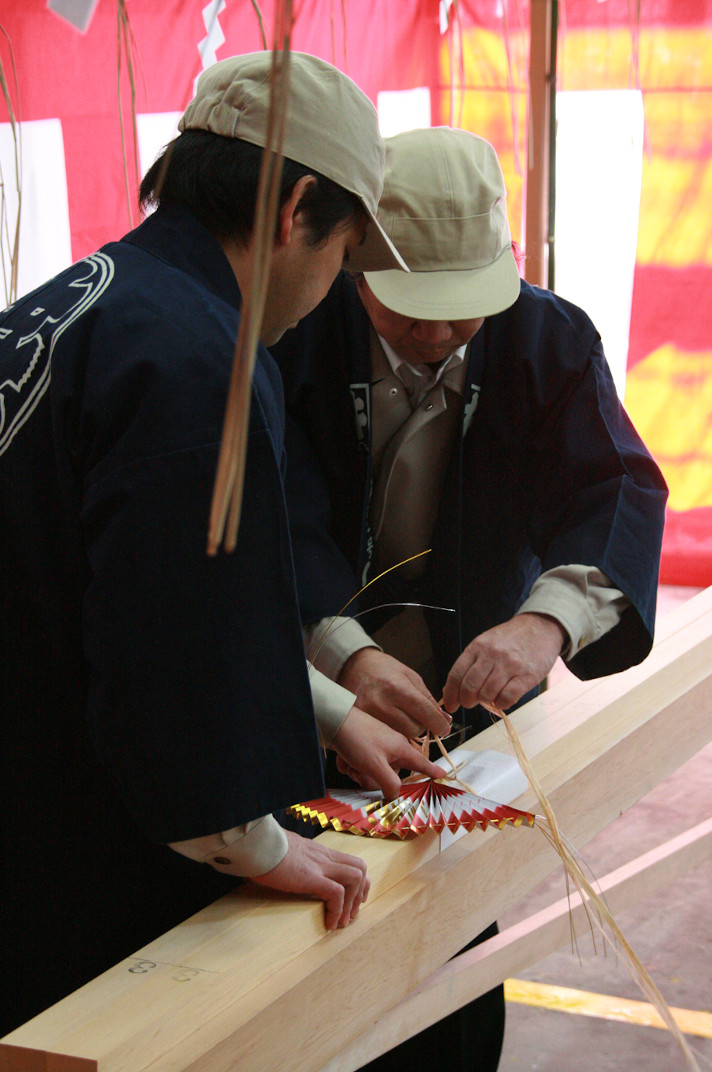
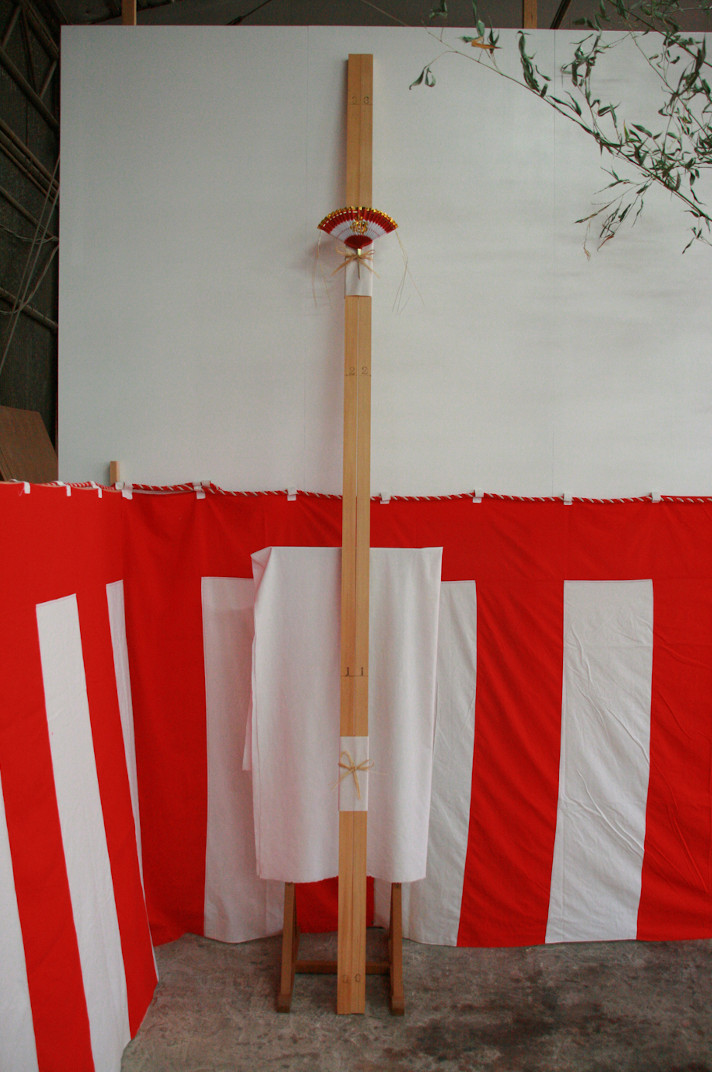
Tools used in the Kenjaku ceremony:
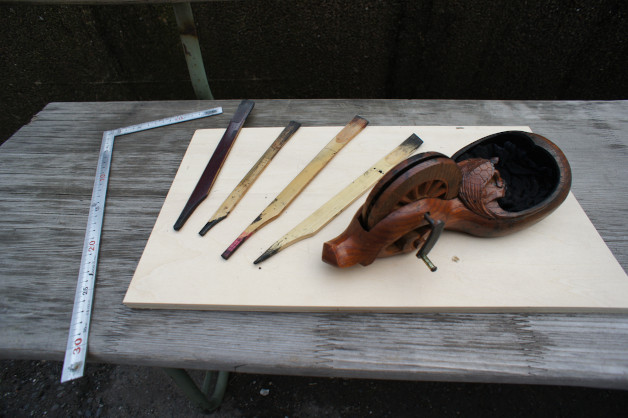
- (1) Carpenter’s square: An L-shaped measuring tool used to draw straight lines
- (2) Ink brush: A brush dipped in the ink pot and used to mark symbols and characters on lumber
- (3) Ink pot: Cotton soaked in sumi ink is placed in the pot. It is a tool used to mark straight lines on materials by plucking a taught string wound on the attached wheel.
Prayers for Business Prosperity and Avoidance of Misfortune at the Hatsuuma Festival
We prayed to Kaneki Inari Daimyojin for business prosperity and the avoidance of misfortune on roof of the Tokyo Mokkoujou Arts & Crafts Furnishings office during the Hatsuuma Festival held on February 8, 2012.
Hatsuuma is the first day of the horse of Asian zodiac in February. It is said that this is day on which the gods of the Fushimi Inari Taisha shrine in Kyoto descended so this is the day on which Hatsuuma festivals are held to worship the Inari deities in Inari shrines throughout Japan. This festival has been held by farmers to pray for an abundant harvest and by business owners to pray for prosperity in business since ancient times. Today, all kinds of prayers are offered, including prayers for a long life and good health, and many descendants.
A new crimson banner was made by Mizuno Some Kojo in Asahikawa City in Hokkaido to replace the worn banner. It was dedicated during the Hatsuuma Festival at Tokyo Mokkoujou Arts & Crafts Furnishings.
